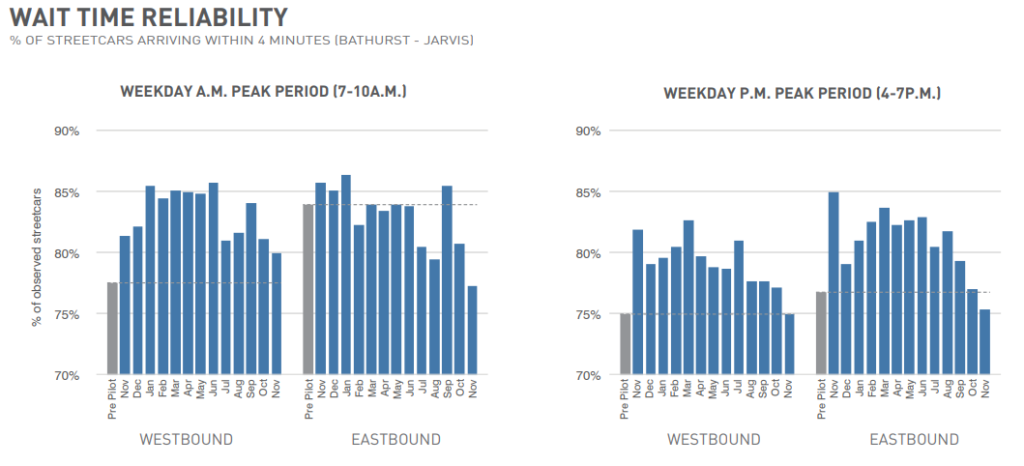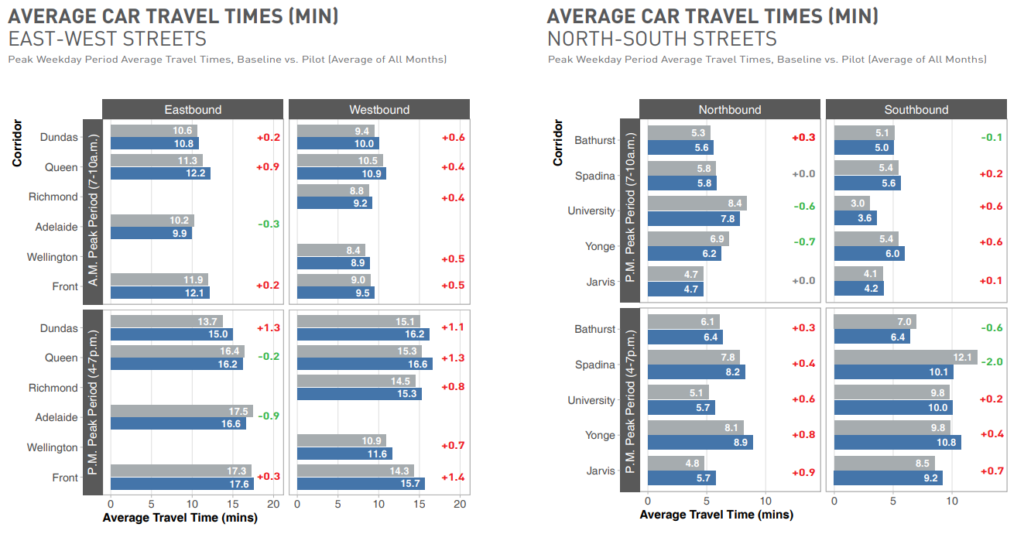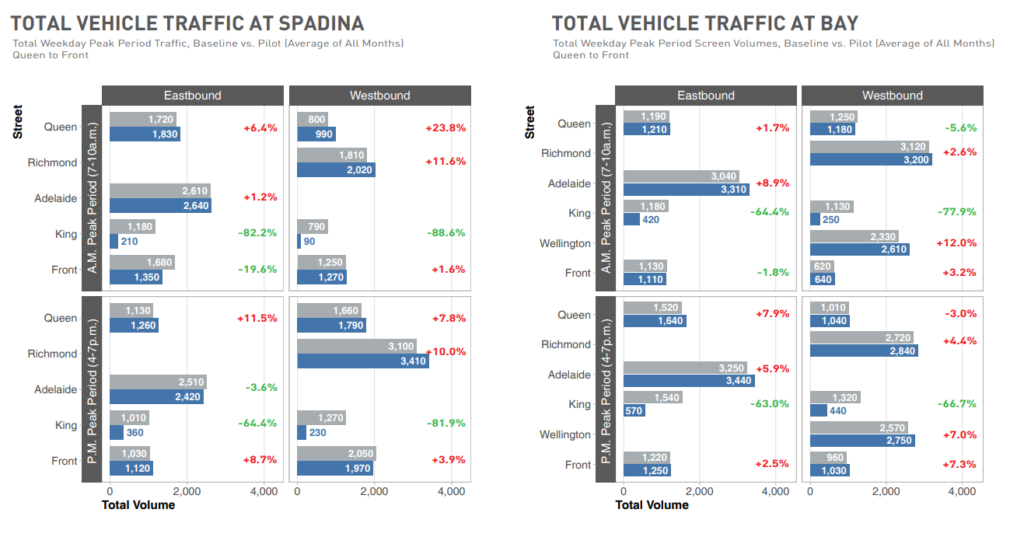In class, we had looked into congestion and how adding or removing lanes can easily cause more or less congestion, depending on the setup of the traffic lanes. In particular, we discussed a bit about the rumours of better traffic in New York despite 5th Avenue being shut down. Relatedly, we also discussed the King Street Pilot Project, where streetcars on King Street were given special priority, allowing for quicker and more reliable TTC streetcar service.
The project stretches from Bathurst St. on the west to Jarvis St. on the east. Given that streetcars are given priority on King Street, any traffic intending to move on the west-east corridor then must go through one of the other streets north/south of King, which also affects north-south traffic as well. The question then becomes, was the pilot a success in any way, and does this success significantly redirect traffic away from King Street and cause further congestion on all those other streets?
Firstly, in the annual summary of the King Street Pilot, it notes a rise in streetcar timeliness:

as well as streetcar travel times:

so overall, for commuters of streetcars, the project is a success.
However, let us also look at the traffic surrounding King St. In terms of travel time,

Counting the minutes, most of them have a delta of less than a minute, with the rare view adding over a minute of traffic and lessening two minutes of traffic, so it’s not significant. In terms of travel volume,

We see that unlike Braess’s Paradox, the removing traffic from King Street did not cause an overall decrease of traffic; to the contrary, there is a nontrival percentage of additional drivers in the roads surrounding King Street. But, despite this increase of traffic, as seen above, the travel time does not significantly increase.
Overall, I think we can agree that the King Street Pilot project has been a success for the streetcars, and I only wonder if they would be extending this concept to other waterfront streets as well.

